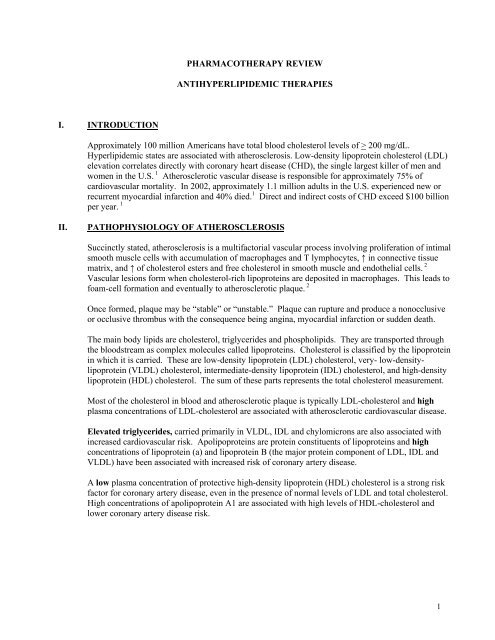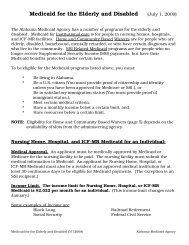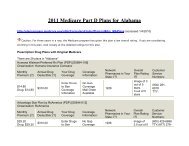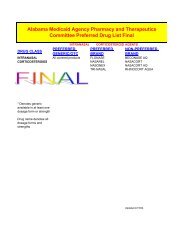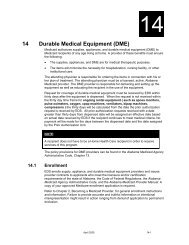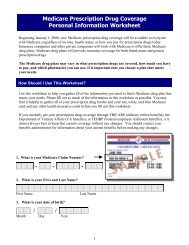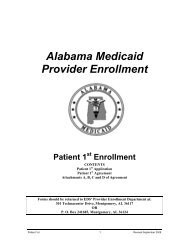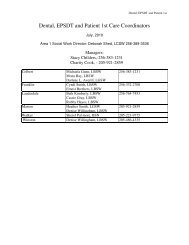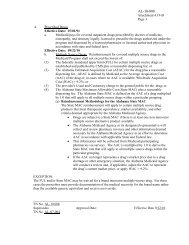PHARMACOTHERAPY REVIEW CNS STIMULANTS for treatment of ...
PHARMACOTHERAPY REVIEW CNS STIMULANTS for treatment of ...
PHARMACOTHERAPY REVIEW CNS STIMULANTS for treatment of ...
You also want an ePaper? Increase the reach of your titles
YUMPU automatically turns print PDFs into web optimized ePapers that Google loves.
<strong>PHARMACOTHERAPY</strong> <strong>REVIEW</strong>ANTIHYPERLIPIDEMIC THERAPIESI. INTRODUCTIONApproximately 100 million Americans have total blood cholesterol levels <strong>of</strong> > 200 mg/dL.Hyperlipidemic states are associated with atherosclerosis. Low-density lipoprotein cholesterol (LDL)elevation correlates directly with coronary heart disease (CHD), the single largest killer <strong>of</strong> men andwomen in the U.S. 1 Atherosclerotic vascular disease is responsible <strong>for</strong> approximately 75% <strong>of</strong>cardiovascular mortality. In 2002, approximately 1.1 million adults in the U.S. experienced new orrecurrent myocardial infarction and 40% died. 1 Direct and indirect costs <strong>of</strong> CHD exceed $100 billionper year. 1II.PATHOPHYSIOLOGY OF ATHEROSCLEROSISSuccinctly stated, atherosclerosis is a multifactorial vascular process involving proliferation <strong>of</strong> intimalsmooth muscle cells with accumulation <strong>of</strong> macrophages and T lymphocytes, ↑ in connective tissuematrix, and ↑ <strong>of</strong> cholesterol esters and free cholesterol in smooth muscle and endothelial cells. 2Vascular lesions <strong>for</strong>m when cholesterol-rich lipoproteins are deposited in macrophages. This leads t<strong>of</strong>oam-cell <strong>for</strong>mation and eventually to atherosclerotic plaque. 2Once <strong>for</strong>med, plaque may be “stable” or “unstable.” Plaque can rupture and produce a nonocclusiveor occlusive thrombus with the consequence being angina, myocardial infarction or sudden death.The main body lipids are cholesterol, triglycerides and phospholipids. They are transported throughthe bloodstream as complex molecules called lipoproteins. Cholesterol is classified by the lipoproteinin which it is carried. These are low-density lipoprotein (LDL) cholesterol, very- low-densitylipoprotein(VLDL) cholesterol, intermediate-density lipoprotein (IDL) cholesterol, and high-densitylipoprotein (HDL) cholesterol. The sum <strong>of</strong> these parts represents the total cholesterol measurement.Most <strong>of</strong> the cholesterol in blood and atherosclerotic plaque is typically LDL-cholesterol and highplasma concentrations <strong>of</strong> LDL-cholesterol are associated with atherosclerotic cardiovascular disease.Elevated triglycerides, carried primarily in VLDL, IDL and chylomicrons are also associated withincreased cardiovascular risk. Apolipoproteins are protein constituents <strong>of</strong> lipoproteins and highconcentrations <strong>of</strong> lipoprotein (a) and lipoprotein B (the major protein component <strong>of</strong> LDL, IDL andVLDL) have been associated with increased risk <strong>of</strong> coronary artery disease.A low plasma concentration <strong>of</strong> protective high-density lipoprotein (HDL) cholesterol is a strong riskfactor <strong>for</strong> coronary artery disease, even in the presence <strong>of</strong> normal levels <strong>of</strong> LDL and total cholesterol.High concentrations <strong>of</strong> apolipoprotein A1 are associated with high levels <strong>of</strong> HDL-cholesterol andlower coronary artery disease risk.1


